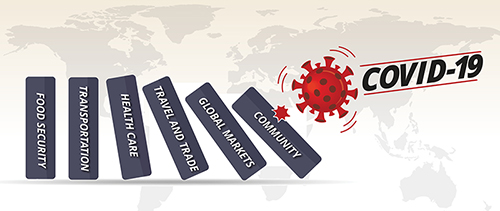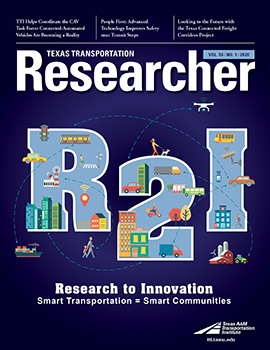
In engineering, the term vector generally identifies a quantity that has magnitude and direction commonly represented by a directed line segment (i.e., an element of a vector space).
Traditionally in medicine, however, a vector is an organism that doesn’t cause disease itself but spreads infection by conveying pathogens from one host to another. Inanimate objects such as foodstuffs and dust are also considered to be vector agents. As the coronavirus 2019 (COVID-19) and previous pandemics have demonstrated, we need to shift our focus and approach to the ways we deliver transportation to minimize the impact of these global scourges.
First, we must realize that although borders are closing and supply chains are disrupted, we’ll continue moving toward a more interconnected world. Against that backdrop, we must acknowledge the major role transportation assets play in the global spread of contagia. The most obvious means of spreading disease involves the transport of exposed individuals from one place to another. There are multiple opportunities to expose others engaged in or tangential to a Point A to Point B trip — ticket agents, security personnel, food court employees and fellow travelers. Even more insidious is the potential for transportation assets to spread germs that continue to remain viable, left behind on surfaces touched by exposed individuals. A study recently published in The New England Journal of Medicine suggests the coronavirus can live on plastic and stainless steel for up to 72 hours. Moreover, our adoption of shared economy precepts exponentially increases opportunities for disease transmission as we carshare, bikeshare, scootershare, etc.

These facts demand that we, as transportation professionals, work across disciplines to reexamine how best to harden transportation assets to minimize their capacity to transport disease. It is our responsibility to do so. We’ll need to work more closely with epidemiologists, infectious disease experts, biochemists, materials scientists and others to reimagine materials of construction and surface preparation. For example, copper and copper alloys were used as microbial agents before the advent of modern antibiotics in 1932 and have been registered at the US Environmental Protection Agency as the first reliable antimicrobial material. Let’s investigate using this metal on surfaces that humans touch, like handrails and doorknobs. We can simultaneously work with materials scientists and biochemists on next-generation antimicrobial materials and coatings that can be deployed as well. This approach builds on the important work the Texas A&M Transportation (TTI) is already investigating at the intersection of transportation and health through TTI’s Center for Advancing Research on Transportation Emissions, Energy and Health.
The reality is here, folks — and it’s clearly established that transportation is a global disease vector. Perhaps we should look to the medical profession and its first, best mission to “do no harm” as we dedicate ourselves to the task of mitigating risk to human life. Human ingenuity can solve any problem. We’re scientists and engineers — it’s what we do. Moreover, our futures may depend on it.
